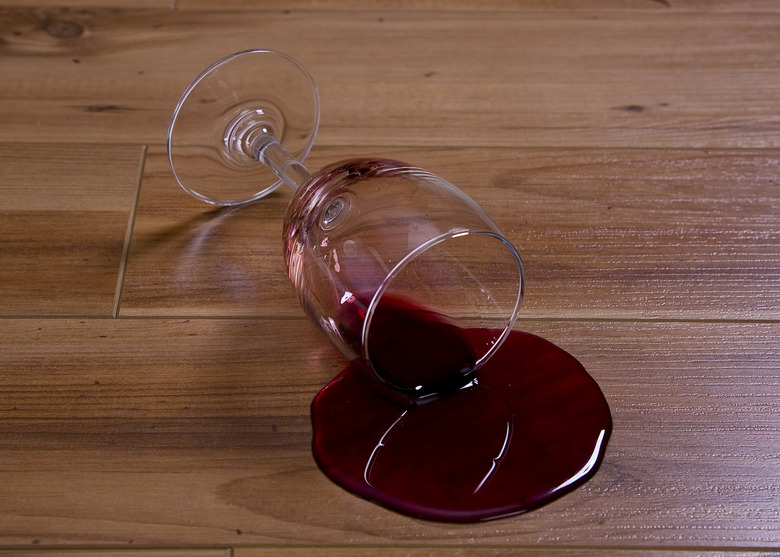How To Remove A Wine Stain From Wood
We may receive a commission on purchases made from links.
Not only is spilling a glass of red wine tragic because you lose the wine — but it can also seriously make a mess, especially on wood surfaces. The natural dyes in wine can penetrate the finish on your wood floor or tabletop if you don't wipe up the spill quickly, and when that happens, you'll have to resort to more in-depth cleaning methods to get rid of the stains.
Here's what you need to do if you've spilled red wine on your table or other wood surface.
Sand Down the Surface
Sand Down the Surface
If the tabletop or floor finish is worn and thin, a wine spill can easily seep into the wood. When this happens, start the removal process by sanding the finish off the affected area so you can bleach out the stain. In most cases, you won't need a sanding machine. Instead, sand by hand — going with the grain of the wood and using 120-grit sandpaper. Feather the edges of the sanded area instead of leaving a discrete border; this makes it easier touch up the area with new finish.
Bleach Out the Stain
Bleach Out the Stain
Of the three or more types of wood bleach available, the one most likely to correct a wine stain is chlorine. You can use household bleach, but if you have a problem stain in a prominent place, you may want to consider making a stronger bleach by mixing a saturated solution of water and calcium hypochlorite — or swimming pool bleach.
Spread the bleach liberally on the wood, and if the color doesn't immediately change, leave it overnight. Repeat once or twice if some color remains, but it won't help to repeat more than that.
Tip
If bleaching isn't 100 percent effective, try rubbing the affected area with a paste made from baking soda and lemon oil.
Tone the Finish
Tone the Finish
Some stains may not come out no matter how much bleach you use — and unless you want to sand off the finish from the entire surface, you may have to live with the discoloration. You don't have to do that, however, if you don't mind darkening the entire surface; you can tone the finish after you've repaired the part covering the stain.
The most effective way to tone is to spray dye on the hardened finish, but wiping on a gel stain also works. After toning, apply a single coat of protective clear finish to fix the toning dye or pigment.
How to Deal With Grape Juice Stains on Wood
How to Deal With Grape Juice Stains on Wood
Wine is fermented grape juice, and grape juice is a natural dye, and that's one of the worst things you can spill on wood. It seeps into the pores and, because of its microscopic chemical structure, bonds so closely with the wood fibers that it's virtually impossible to remove.
This is why it's better to remove a wine or juice spill quickly by dabbing it up with an absorbent cloth while it's still wet. If the wood has a finish, and the wine or grape juice leaves discoloration on the finish, you can remove the discoloration by scrubbing it with a combination of baking soda and lemon oil.
